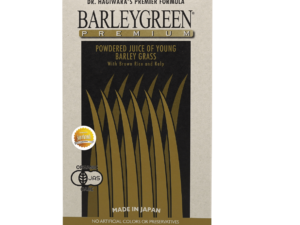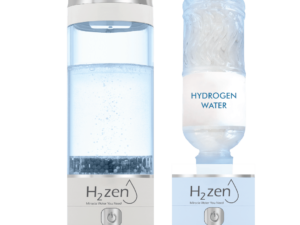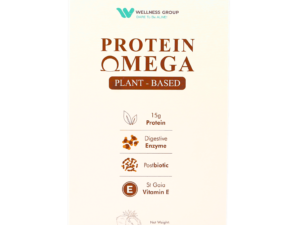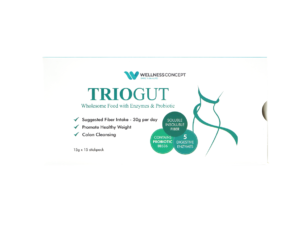This concise guide explains what those early results mean for everyday wellness in Malaysia. It summarizes current human studies on exercise, liver and heart support, mental health, and aging. The intent is practical: explain science without hype.
Readers will learn how researchers tested effects in people, why results are promising but preliminary, and where larger trials are needed. The piece also covers intake, safety, and quality signals to watch when choosing a device or product.
Wellness Group provides local guidance and product support via WhatsApp at +60123822655. Business hours: Monday–Friday 9:30 am–6:30 pm; Saturday–Sunday 10 am–5 pm.
The article sets clear expectations: potential benefits are promising, but readers should view this as informational and consult a healthcare provider if they have health conditions.
Key Takeaways
- Early human trials show biological effects but need larger studies for firm conclusions.
- The guide covers mechanisms, human evidence, safety, intake, and local buying tips for Malaysia.
- Quality and production methods matter when choosing any drinking product or device.
- Wellness Group offers friendly local support via WhatsApp +60123822655 during posted hours.
- Readers should treat this article as informational and discuss changes with their clinician.
Understanding Hydrogen-Rich Water: What It Is and Why It’s Different
This short section explains the science in plain terms so Malaysian readers can choose products with confidence.
What it is: Hydrogen-rich water is ordinary water with dissolved molecular hydrogen (H2). H2 is a tiny, neutral molecule that is colorless and odorless. It diffuses easily and can reach mitochondria and cell nuclei.
Molecular hydrogen in drinking water: small molecule, big effects
Molecular hydrogen selectively scavenges damaging radicals like hydroxyl (-OH) and peroxynitrite (ONOO−). This targeted action may support redox balance without broadly blocking useful oxygen signaling.
At room temperature and one atmosphere, H2 dissolves up to about 1.6 ppm. That measurable concentration is a key factor for expected effects in humans and animals.
Hydrogen water vs. electrolyzed hydrogen water: key differences and advantages
Electrolyzed hydrogen water (EHW) is created at the cathode and tends to be alkaline. In cell studies, EHW showed roughly five times the ROS-scavenging seen with equal-concentration dissolved H2.
About 60% of that extra activity remained after removing dissolved H2. One hypothesis is that platinum nanoparticles from electrodes add durable reductive capacity.
- Production method influences concentration and stability.
- Different methods can change taste and user experience.
- Comparative human trials are still limited, so practical advantages depend on goals.
Takeaway: Understanding production and concentration helps readers pick between devices or bottled options in Malaysia. The next sections explain how these molecular mechanisms relate to health outcomes.
The Science Behind the Benefits: Antioxidant and Anti-Inflammatory Mechanisms
Research links dissolved H2 to targeted antioxidant actions that spare helpful oxygen signaling while reducing cellular damage.
Selective radical quenching: H2 preferentially neutralizes the most reactive species, hydroxyl radicals and peroxynitrite, which can harm DNA and lipids. This selectivity helps lower markers of oxidative stress without broadly blocking useful oxidant signals.
Interrupting ROS–inflammation crosstalk
In cell and animal models, electrolyzed H2 suppressed NF-κB and AP-1 activity, cutting IL-1β, IL-6 and TNF-α levels. That breaks a feedback loop where reactive oxygen species drive inflammation and inflammation creates more oxidative stress.
Cell protection and gene shifts
Data from a human RCT showed that drinking 1.5 L/day reduced PBMC apoptosis and down-regulated TLR–NF-κB genes (including TLR1/2/4/6/7/8/9, MYD88, NFKB1). This shift correlated with lower expression of IL1B, IL8 and related inflammatory signals.
- Some studies also note Nrf2 activation, which boosts intrinsic antioxidant defenses.
- Electrolyzed forms may show prolonged ROS-scavenging beyond dissolved H2, though human mechanisms remain under study.
Takeaway: These mechanisms offer plausible routes to reduce oxidative stress and preserve cell function, but larger clinical trials are needed to confirm consistent effects. For practical notes and local context, see the cleansing study.
Evidence at a Glance: What Studies in Humans Are Showing Today
Early clinical work shows measurable but modest signals across immune, metabolic, and vascular endpoints.
Key randomized results: In a double-blind, placebo-controlled trial, healthy adults who consumed 1.5 L/day for four weeks had higher biological antioxidant potential, fewer apoptotic PBMCs, and lower CD14+ frequency. RNA-seq revealed down-regulation of TLR–NF-κB genes and reduced IL1B, IL8, IL6R, and TNFRSF10B expression, with stronger changes in participants aged 30 and above.
- Metabolic and cardiovascular studies report improved LDL-C, apoB, HDL function, lower HbA1c in some groups, plus +25.4% RHI after two weeks in small trials.
- Exercise trials show mixed effects: some better lactate handling and ventilatory efficiency, but benefits vary by athlete and protocol.
- Blood biomarkers and gene shifts give biological plausibility, while clinical endpoints remain preliminary.
Limitations and outlook: Most studies are small, short, and use varied production methods and concentrations. These results suggest potential benefit but warrant larger, longer trials before changing standard care. This article encourages readers in Malaysia to view current findings with cautious optimism and to compare product claims to published studies.
Hydrogen water as natural medicine
Systematic reviews conclude that hydrogen-rich water shows promise across several areas, including exercise recovery, liver support, cardiovascular markers, mood, COVID-19 contexts, oxidative stress, and aging. These summaries highlight consistent biological signals but also call for larger, rigorous trials to confirm clinical applications.
What “natural medicine” means here: it refers to a supportive, non-pharmaceutical approach intended to complement standard care. In practice, hydrogen therapy is considered an adjunct for goals like antioxidant balance, recovery after exercise, and cardiometabolic support—not a substitute for prescribed treatments.
The article links immune and vascular signals described earlier to practical outcomes. Small trials report improved antioxidant markers and endothelial indices that may translate into better recovery and vascular resilience in some people.
Outcomes vary by individual. Product quality, consistent intake, and clinical context matter. Readers with chronic conditions or on medications should consult a clinician before adding hydrogen water to their routine.
For Malaysians seeking local guidance and tips on evaluating claims, see this short guide on cholesterol and related signals: hydrogen water for cholesterol. Practical intake and quality-selection advice follows in the next sections.
Exercise and Recovery: Performance, Fatigue, and Oxidative Stress
Athletes and coaches want clear signals about what helps training and recovery. Short trials suggest targeted intake before hard sessions can change key markers tied to fatigue and recovery.
Endurance and sprint findings
Seven-day nano-bubble HRW improved anaerobic power in trained cyclists. Other trials found pre-workout hydrogen-rich water reduced blood lactate at high intensities and improved ventilatory efficiency. Repeated sprint endurance gains appeared in some studies, while a crossover trial showed mixed results with benefits for slower runners.
Antioxidant capacity in training
In juvenile female soccer players, two months of HRW lowered serum malondialdehyde and TNF-α. It also raised superoxide dismutase and total antioxidant capacity. These shifts indicate less oxidative stress and better redox capacity during training blocks.
| Study group | Intervention | Main results |
|---|---|---|
| Trained cyclists | 7-day nano-bubble HRW | Improved anaerobic performance and sprint power |
| Mixed athletes (crossover) | Pre-workout HRW | Variable effects; benefit in slower runners |
| Juvenile female soccer | 2 months HRW | ↓ MDA, ↓ TNF-α; ↑ SOD, ↑ total antioxidant capacity |
- Where it may help: lower lactate at high intensity, better ventilatory efficiency, and selective endurance gains.
- Why responses vary: training status, study design, and individual physiology matter.
- Practical tip: try pre-workout consumption and track lactate, perceived exertion, or time trials.
Context and caution
These results are promising but mixed. Athletes should pair trial use with good sleep, nutrition, and periodization. Product concentration and production matter when trying to match study conditions. For local demos and routine building, Wellness Group offers guidance in Malaysia.
Cardiovascular and Metabolic Health: Lipids, Glucose, and Endothelial Function
Small clinical trials report measurable shifts in lipids, glucose metabolism, and endothelial markers after short-term hydrogen-rich routines.
Lipids and metabolic syndrome:
High-concentration hydrogen-rich water reduced fasting glucose and total cholesterol in a randomized trial of adults with metabolic syndrome.
Participants also showed improved HbA1c and lower inflammatory biomarkers, plus favorable waist-to-hip ratio and BMI shifts over the study period.
Vascular benefits and RHI:
Reactive hyperemia index (RHI) rose by 25.4% after two weeks in one trial, suggesting enhanced endothelial function and better microvascular reactivity.
This change aligns with modest LDL-C and apoB drops seen in small cohorts, and an 8% HDL increase reported in an 8-week study.
Antioxidant and subgroup signals:
Ten-week protocols reduced total cholesterol and LDL-C; smokers experienced larger triglyceride declines than non-smokers, showing baseline risk can shape results.
Antioxidant markers improved in parallel: superoxide dismutase (SOD) rose ~39% while urinary TBARS fell ~43% in some studies.
“These early results are encouraging for cardiometabolic prevention, but they do not replace standard treatments.”
Practical context and next steps:
Readers should view these findings as supportive evidence. Integration with diet, exercise, and medications is advised rather than substitution.
When shopping locally, ask sellers about measured concentration, independent testing, and how product claims map to study protocols.

| Endpoint | Reported change | Study duration |
|---|---|---|
| Total cholesterol / LDL-C | ↓ significant reductions | 8–10 weeks |
| HDL cholesterol | ↑ ~8% | 8 weeks |
| Reactive hyperemia index (RHI) | ↑ 25.4% | 2 weeks |
| Glycemic markers | ↓ fasting glucose; ↓ HbA1c | varied, high-concentration protocols |
| Antioxidant markers | ↑ SOD ~39%; ↓ urinary TBARS ~43% | 8 weeks |
- Interpreting results: improvements are modest and come from small trials; larger studies are needed.
- Clinical framing: these interventions may lower cardiometabolic risk factors but are adjuncts, not replacements, for prescribed care.
- Local buyers: verify concentration claims and ask for testing if comparing products in Malaysia.
Liver and Kidney Support: Hepatitis B, NAFLD, and Dialysis Care
Liver and kidney health can show measurable shifts when targeted redox support is added to standard care. Small clinical trials report biochemical and symptom changes, but they remain preliminary.
Liver function and viral load trends in chronic hepatitis B
In one set of studies, patients who consumed 1.2–1.8 L/day of hydrogen-rich water showed improved liver enzymes and reduced HBV DNA. Oxidative stress markers fell in parallel, suggesting less cellular damage.
Non-alcoholic fatty liver disease: inflammation and oxidative stress
A randomized, double-blind trial in NAFLD reported reduced inflammatory signals and lower oxidative stress after short-term intake. These changes map to disease mechanisms where redox imbalance drives injury and fibrosis risk.
Dialysis applications: fatigue, oxidative markers, and renal labs
Electrolyzed H2 used during hemodialysis improved blood urea nitrogen and some renal function measures. Patients also reported less fatigue on dialysis and off days — a meaningful quality-of-life outcome.
- Key takeaways: liver enzyme and viral load trends improved in some hepatitis B cohorts with 1.2–1.8 L/day consumption.
- NAFLD trials show anti-inflammatory and antioxidant effects that align with disease pathways.
- EHW in dialysis systems may reduce oxidative stress and lessen fatigue beyond simple drinking routines.
“These findings suggest adjunctive benefit, not a replacement for standard therapy.”
Practical notes for Malaysia: patients should coordinate any new intake with specialists. Device compatibility with dialysis or clinical care, consistent consumption, and service support matter when evaluating options.
Mental Health and Neurology: Mood, Stress, and Cognitive Protection
Mood and cognitive resilience often track changes in inflammation and cellular redox balance. This section reviews human and preclinical signals that link inflammatory markers to mood and brain energy pathways.
Mood and anxiety outcomes
Key human data: In a trial of women with panic disorders, participants who drank 1500 mL/day of hydrogen-rich water alongside psychotherapy for three months showed significant drops in IL-6, IL-1β, IL-12, and TNF-α versus controls.
Symptom scores did not separate clearly, but the blood cytokine shifts may reflect improved physical resilience and lower systemic inflammation.
Neuroprotective potential
Preclinical studies link targeted antioxidant support to better brain energy metabolism and less neuronal stress. These models suggest a mechanistic route for cognitive protection and reduced oxidative stress.
Overall, current studies offer promising biological signals but limited clinical outcomes. Larger, longer trials are needed to confirm cognitive and mood benefits.
| Endpoint | Study detail | Reported result |
|---|---|---|
| Panic disorder trial | 1.5 L/day + psychotherapy, 3 months | ↓ IL-6, IL-1β, IL-12, TNF-α; no clear symptom change |
| Preclinical neuro models | Rodent and cell studies | Improved mitochondrial function; ↓ oxidative stress |
| Practical notes | Small human trials; varied methods | Biomarker shifts suggest potential; more trials needed |
- Practical tips: maintain consistent intake, time consumption around stressful periods, and track sleep and perceived stress.
- In Malaysia, seek product education and guided trials to test what works safely alongside standard care.
Pain and Inflammation: From IBD Discomfort to Neuropathic Pain
Pain in bowel inflammation and nerve injury often shares a root cause: a cycle of oxidative stress and immune signaling that amplifies sensation.
Preclinical work shows that interrupting that cycle can reduce visceral and neuropathic pain. In rodent IBD models, electrolyzed hydrogen-rich water cut abdominal pain by lowering inflammation, suppressing NF-κB, and dropping pro‑inflammatory cytokines.
IBD-related abdominal pain
Animal studies reported less visceral pain when oxidative damage fell. Breaking the ROS–inflammation loop lowered tissue injury and improved comfort.
Neuropathic and inflammatory pain models
In nerve injury models, electrolyzed forms upregulated HO‑1 and altered NADPH pathways. That change reduced oxidative stress in spinal and dorsal root tissues and cut allodynia and hyperalgesia.
- Mechanism: antioxidant shifts and NF‑κB suppression reduce signaling that drives chronic pain.
- Clinical note: findings are preclinical; human trials are still needed to confirm clear outcomes.
- Practical framing: hydrogen-rich water or hydrogen water may be considered an adjunct to standard therapy for bowel or neuropathic discomfort, with medical oversight.
“These models link redox control to measurable analgesia, but translation into routine care still requires trials.”
Takeaway: For Malaysians exploring options, safety and tolerability make careful, guided experimentation reasonable. Diet, microbiome care, and stress management should go hand in hand with any exploratory therapy.
Skin and Healthy Aging: Oxidative Damage, Youthful Function, and Resilience
Every day, environmental stress shortens skin resilience and raises markers tied to aging.
Why it matters: Oxidative damage breaks down collagen, impairs repair, and changes tone. Over years, higher oxidative stress and weaker antioxidant defenses make visible aging and delayed recovery more likely.
Targeted antioxidant approaches aim to reduce lipid peroxidation and oxidative DNA damage. Research models and some small clinical reports show reduced markers after regular intake of dissolved H2 in beverages with GRAS status.
Systemic redox balance links to dermal health. When damage falls, collagen integrity and barrier repair respond better. That may support more resilient texture and quicker recovery from daily insults.
Practical, realistic steps:
- Try consistent intake alongside good hydration habits and balanced nutrition.
- Combine intake with topical care: gentle cleansing, sunscreen, and collagen-supporting nutrients.
- Track changes in texture, hydration, and tone over weeks; expect gradual support, not overnight fixes.
| Marker | What it shows | Reported change |
|---|---|---|
| Lipid peroxidation (MDA) | Membrane damage | Reduced in models and some trials |
| 8‑OHdG (DNA damage) | Oxidative DNA lesions | Lowered in select studies |
| Collagen integrity | Firmness and elasticity | Supports observed with reduced oxidative burden |
COVID-19 Context: Anti-Inflammatory Potential and Respiratory Support
Some clinical teams tested inhaled gas therapies to calm cytokine storms and reduce breathing resistance in mild-to-moderate COVID-19 cases.
What researchers observed: inhaled hydrogen gas inhibited cytokine cascades and lowered inhalation resistance in small trials. Antioxidant and biological effects persisted beyond immediate clearance, suggesting lasting modulation of oxidative stress and immune signaling.
Inhalation vs. drinking: inhaled gas delivers the molecule directly to the lungs and airways, while drinking hydrogen water works systemically. Both routes engage anti-inflammatory and antioxidant pathways, but their delivery, timing, and measurable respiratory effects differ.
Biomarkers and clinical signals
Blood cytokines dropped in several reports, linking lower IL‑6 and related mediators to improved comfort. Respiratory resistance fell in mild-to-moderate groups, which may reflect reduced airway inflammation rather than antiviral action.
| Intervention | Primary signal | Reported outcome |
|---|---|---|
| Inhaled gas therapy | Cytokine suppression | ↓ IL‑6, ↓ inhalation resistance |
| Oral hydrogen water | Systemic antioxidant markers | ↓ oxidative stress; modest biomarker shifts |
| Combined findings | Persistent effects | Biological activity beyond immediate exposure |
- The findings are promising but preliminary and context-specific.
- These approaches are supportive; they do not replace standard medical care.
- Malaysian readers should consult clinicians before trying adjunctive therapies.
“Early trials show potential for modulating inflammation and easing respiratory strain, but larger studies are needed to define clinical benefit.”
How It’s Made and Stored: Generators, Tablets, Ionizers, and EHW Systems
Production choices—from tablets to pressurized infusion—drive concentration, cost, and convenience.
Methods of production and achievable concentrations
Common production methods include tablets, countertop electrolysis/ionizers that make EHW, pressurized infusion machines, and dissolving gas under pressure. At room temperature, saturation sits near 1.6 ppm; pressurized systems can reach higher levels.
Container choice and retention
Container matters. Aluminum bottles retain dissolved gas far longer than glass or plastic, which lose it quickly. For daily routines, sealed aluminum or serviced generators preserve concentration and user experience.

EHW’s unique properties
EHW shows stronger ROS scavenging than matched-concentration solutions. About 60% of activity can persist after removing dissolved gas, possibly due to tiny platinum particles from electrodes. That enduring effect may change the expected biological effect.
| Method | Typical concentration | Key trade-offs |
|---|---|---|
| Tablets | ~0.5–1.5 ppm | Cheap, portable, variable quality |
| Ionizers / EHW | 0.8–1.6 ppm (alkaline) | Maintenance, potential Pt residue, robust effect |
| Pressurized infusion | >1.6 ppm possible | Higher cost, best retention |
- Verify concentration where possible; effects can be dose-dependent.
- Check device maintenance (electrodes, filters) and local service options in Malaysia.
- Balance upfront cost, convenience, and long-term quality when choosing a system.
How Much to Drink: Practical Intake, Timing, and Consistency
Practical intake plans turn study doses into daily routines people can test in Malaysia.
Common study ranges
Most human trials used about 1.5 L/day for four weeks. Liver studies used 1.2–1.8 L/day and metabolic trials often used 1.5–2.0 L/day. These numbers give a useful starting capacity for trialing consumption safely.
Timing and pre-workout use
Split daily intake into morning, midday, and evening servings. Take one portion 20–30 minutes before hard sessions. Some athletes reported lower lactate and better ventilatory efficiency with pre-workout hydrogen-rich water.
| Routine | Volume | Timing |
|---|---|---|
| Maintenance | 1.2–1.5 L/day | 3 split servings |
| Metabolic trial template | 1.5–2.0 L/day | Evenly spaced; morning priority |
| Pre-workout boost | 250–500 mL | 20–30 min before exercise |
| Freshness focus | Per serving | Consume immediately after preparation |
Freshness and concentration matter: dissolved hydrogen dissipates fast. Use aluminum-lined bottles to retain gas longer during commute or office use.
Ramp up intake slowly, track responses, and balance drinking with electrolytes in hot climates. Consistent daily consumption beats sporadic use for clearer results.
“Treat these templates as flexible guides; individual size, activity, and climate shape ideal intake.”
Safety, Side Effects, and Who Should Consider Hydrogen Water
Here we cover tolerability, regulatory status, and simple steps to reduce risk when trying hydrogen products.
Regulatory and tolerability basics: dissolved hydrogen used in beverages has GRAS status. Mammalian cells do not metabolize the gas; excess is exhaled, which supports good tolerability in trials.
Human and animal studies at drinking concentrations report no cytotoxicity. Long‑term trials are limited, but dialysis patients and people with metabolic conditions have taken part without major safety signals.
Practical risks and precautions
- Maintain device and container hygiene to avoid microbial risk and ensure consistent effects.
- Track minor side experiences (transient GI changes) and reduce intake if needed.
- Check device quality and third‑party testing where possible to limit contamination risk.
Who may consider it
Active adults and people with high oxidative stress or cardiometabolic conditions might trial hydrogen-rich water in consultation with clinicians. Those who are pregnant, have complex disorders, or use multiple medications should get medical advice first.
“Treat any adjunctive approach as preventive support, not a substitute for standard care.”
Choosing Quality in Malaysia: What to Look For Before You Buy
Practical checks help buyers match real performance to manufacturer claims.
Consumers should insist on clear concentration claims and on-site demonstrations. At room temperature, dissolved levels can approach ~1.6 ppm; ask vendors how they measure retention and which container they recommend.
Testing, validation, and production methods
Ask for third‑party validation and independent meter readings. Request documentation that ties the product’s production method to achievable concentration and consistent daily results.
Maintenance, filters, and local support
Check electrode and filter replacement schedules, cleaning steps, and warranty terms. Local service matters: easy access to parts and prompt repairs keeps performance steady over years.
- Compare material safety and container options—aluminum retains dissolved gas far better than plastic or glass.
- Balance upfront cost, ongoing maintenance, and demonstrated results when choosing between portability and continuous systems.
Tip: ask a vendor to demonstrate measured concentration and to show test reports before purchase.
For unbiased demos and local guidance, contact Wellness Group via WhatsApp +60123822655. Business hours: Mon–Fri 9:30 am–6:30 pm; Sat–Sun 10 am–5 pm.
Getting Started with Wellness Group Malaysia
Start local and practical. Wellness Group helps people in Malaysia test modest, study-aligned routines with friendly guidance. They focus on clear explanations, simple demos, and realistic plans tailored to each home.
WhatsApp: +60123822655 for guidance, demos, and support
Message the team to ask about device types, measured concentration, container choices, and daily consumption tips. Advisors answer quick Q&A and schedule demonstrations during business hours.
Business hours and booking
Office hours are Monday–Friday 9:30 am–6:30 pm, and Saturday–Sunday 10:00 am–5:00 pm. Send a WhatsApp message to set a demo or request after‑sales support.
The demo covers what to expect: concentration measurement, container trade‑offs, and a simple daily routine to start. Advisors tailor recommendations by household size, budget, and health goals.
| Contact | Hours | Demo focus |
|---|---|---|
| WhatsApp +60123822655 | Mon–Fri 9:30–18:30 Sat–Sun 10:00–17:00 | Concentration, container, consumption plan |
| Support | On request via chat | Maintenance, filter schedules, quality checks |
- Try small first: begin with a simple routine and scale as interest and benefits become clear.
- Ask about evidence, safety, and long‑term service to keep quality steady.
“Wellness Group aims to educate and support—making consistent, quality use easier for long‑term benefits.”
Why Wellness Group: Expertise, Education, and Ongoing Care
The team at Wellness Group pairs product demos with plain-language guidance so buyers can match claims to real performance.
Education-first support helps consumers understand production methods, measurable concentration, and practical routines. Advisors explain which devices suit a household, and why quality matters for consistent benefits.
Ongoing care includes maintenance reminders, service support, and troubleshooting to keep systems performing over time. Customers get clear instructions and timely local repairs when needed.
| Service | What it covers | When |
|---|---|---|
| Product demos | Measured concentration & container options | By appointment, weekends available |
| After‑sales support | Maintenance, filters, troubleshooting | Mon–Sun support hours |
| Guided routines | Daily intake plans and realistic goals | Ongoing follow-up |
Wellness Group emphasises quality and honest talk about what hydrogen-rich water can and cannot do based on current studies. They invite customers to evaluate vendors on education and service, not just price.
“Local presence and clear communication mean buyers in Malaysia are not left alone after purchase.”
Contact: WhatsApp +60123822655. Business hours: Mon–Fri 9:30 am–6:30 pm; Sat–Sun 10:00 am–5:00 pm.
Conclusion
This wrap-up balances the scientific promise with clear, practical guidance for everyday use.
Human trials show immune modulation, shifts in antioxidant capacity, modest cardiometabolic and endothelial signals, and preclinical pain findings. These results point to potential support for redox balance, recovery, and quality of life when concentration, freshness, and consistency match study conditions.
Safety looks favourable in short trials, but larger, longer studies are needed to confirm clinical effects. Readers should pair any trial of hydrogen water or hydrogen-rich water with healthy habits and clinician advice for prevention‑focused goals.
For buying help and local guidance in Malaysia, message Wellness Group on WhatsApp +60123822655. Business hours: Mon–Fri 9:30 am–6:30 pm; Sat–Sun 10 am–5 pm. Thank you for reading this article and exploring realistic next steps.
FAQ
What is hydrogen-rich drinking and how does it differ from regular bottled water?
It contains dissolved molecular gas that acts as a tiny antioxidant. Unlike regular bottled products, it delivers dissolved molecules that quickly diffuse into blood and tissues, offering selective neutralization of harmful radicals without disturbing normal oxygen use.
How does it work against oxidative stress and inflammation?
The molecules target reactive species such as hydroxyl radicals and peroxynitrite, interrupting the cycle between reactive oxygen species and pro-inflammatory signaling like NF-κB. This helps protect cells from apoptosis and reduces inflammatory cytokine release in various tissues.
Are there meaningful human studies supporting benefits?
Yes. Small clinical trials and pilot studies report improvements in markers of antioxidant capacity, immune modulation, and metabolic signals. Results show promise but also call for larger, longer randomized trials to confirm effects across populations.
Can athletes use this for performance and recovery?
Many trials describe reduced perceived fatigue, lower post-exercise lactate in some athletes, and improved antioxidant markers such as SOD. Outcomes vary by sport, intensity, and timing, so athletes should test personal responses in training.
Does it help cardiovascular and metabolic health?
Studies note trends toward better lipid profiles, modest HbA1c changes, and improved endothelial function in some participants. Evidence is encouraging but not definitive; it may serve as a complementary strategy alongside diet and activity.
Are there benefits for liver or kidney conditions?
Preliminary research shows reduced oxidative stress and inflammatory markers in NAFLD and improved fatigue and markers in dialysis contexts. Small hepatitis B studies suggest favorable trends in liver function, yet more research is required.
What about mental health and neuroprotection?
Trials indicate potential mood and anxiety benefits tied to lower pro-inflammatory cytokines and better cellular energy balance. Neuroprotective effects appear in early studies through redox regulation and mitochondrial support.
Can it relieve pain and inflammatory bowel symptoms?
Some research finds symptom relief in IBD-related abdominal pain and reductions in neuropathic pain markers. Mechanisms include oxidative and inflammatory pathway modulation such as HO-1 and NADPH-related actions.
Is there evidence for skin health and aging?
Reports highlight reduced oxidative damage to skin cells and improved markers of resilience. Topical or systemic approaches may help maintain youthful function, though cosmetic claims need rigorous trials.
How is it produced and what storage matters?
Production methods include generators, tablets, ionizers, and electrolytic systems (EHW). Achievable concentrations depend on method. Selection of container—aluminum, specific plastics, or glass—affects retention and freshness.
What intake levels have studies used?
Common protocols range from about 1.2 to 2.0 liters daily, with some using pre-workout timing. Freshness and concentration at the point of intake influence effectiveness, so regular, consistent use appears important.
Is it safe and are there side effects?
It has Generally Recognized As Safe (GRAS) status in many contexts and is well tolerated. Excess gas is typically exhaled. People with severe health issues should consult clinicians before starting any new regimen.
Who may benefit most from trying it?
Active adults, those exposed to high oxidative stress, and people seeking adjunct support for metabolic, liver, or recovery goals often report interest. Individual responses vary, so monitoring outcomes matters.
How to choose quality products in Malaysia?
Look for transparent concentration claims, third-party testing, device maintenance support, and reputable service. Check filter standards, replacement schedules, and local warranty or repairs for consistent performance.
Where can someone get guidance or demos from Wellness Group Malaysia?
They can contact WhatsApp +60123822655 for product guidance, demos, and customer support. Business hours are Monday–Friday 9:30 am–6:30 pm and Saturday–Sunday 10 am–5 pm.
